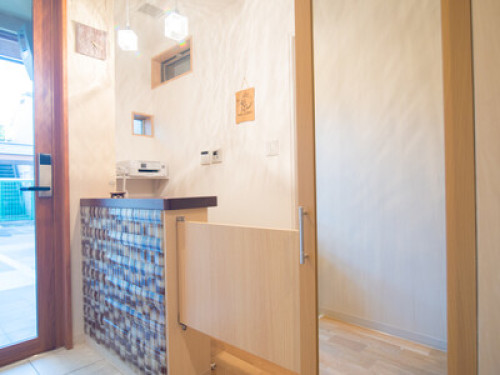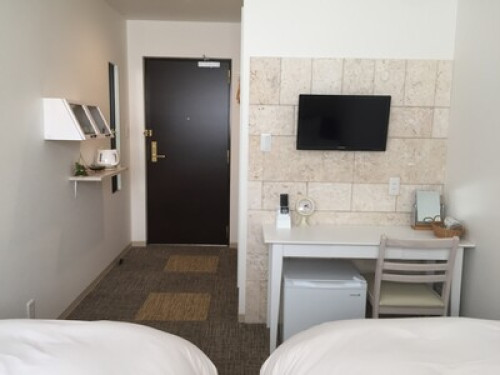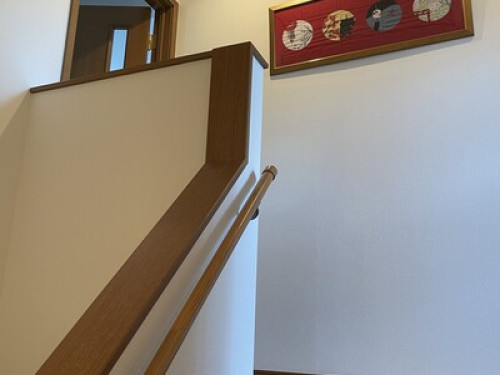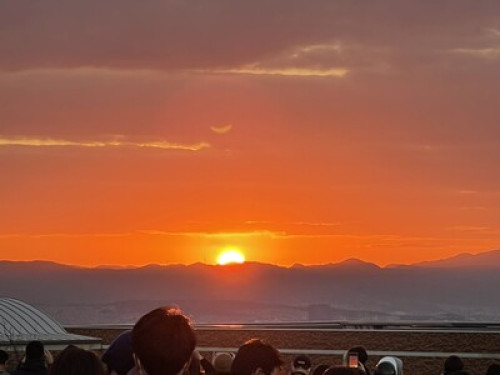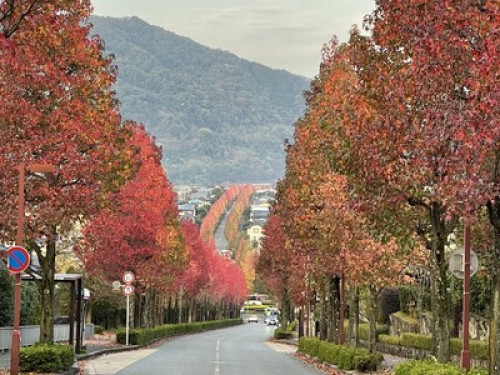Surrounded by the hills of central Honshu, Kyoto is one of Japan's largest cities. It's also the educational hub of western Japan and boasts several universities and higher educational establishments. Although one of Japan's great tourist destinations, it is famous for having preserved much of the atmosphere of the past, having been the only major Japanese city to escape the devastation of WWII.
Celebrated as the residence of the Emperor and Japan's principal cultural center for almost 1,100 years, Kyoto today boasts numerous things to do and great places to visit, including exploring the fine examples of sculptures, paintings, and other art forms in its many museums and galleries.
Why Book Student Accommodation in Kyoto?
With a history spanning over a thousand years, Kyoto is home to 17 World Heritage UNESCO sites, over 2,000 ancient shrines and temples, peaceful Zen gardens, bustling food markets, wooden teahouses, and narrow cobbled alleyways adorned with cherry blossom trees. Kyoto’s many charms attract millions every year who want to get a real feel for the beauty and spirit of both modern and traditional Japanese arts and culture.
Over the last 12 years, Japan has been considered one of the safest countries in the world, and since 2017, the combined metropolitan area of Kyoto-Osaka-Kobe (also known as Keihanshin) has been ranked a top 20 student city in the QS Best Student Cities. Kyoto offers the experience of city life without all the chaos you might expect in Tokyo. It’s also much safer than other cities, making it a great place for students to enjoy a safe, urban lifestyle and culture. It’s a pretty affordable city for students as well, with the average annual rent costing 582,360 JPN yen (US~$5,365) and reasonable tuition fees.
Kyoto is home to approximately 150,000 students from all over the world, so you definitely won’t be on your own when you study there. The buzzing student atmosphere sees students getting involved with and enjoying everything that Japanese life has to offer; from all-night karaoke bars, to manga and animations, gaming and entertainment centers. For those who enjoy a hike, jog, walk, cycle, or swim, you’ll be spoilt for choice. Kyoto is surrounded by mountain ranges, leaving you to get out and explore to your heart’s content. The Kamogawa river is also great for cooling off during the hot summer months.
Universities in Kyoto
Kyoto University
Casita has accommodation options within walking distance to the university.
More than 8 bus stops surround the campus; Kita Shirakawa is just a minute walk away.
Old Mitsui Family Shimogamo Villa is just a 7-minute car ride away.
Ritsumeikan University
Our accommodation options are all within walking distance of the university.
There are 3 bus stops close to the university; Ritsumeikan Daigaku mae is just a 6-minute walk away.
Kinukake Road is just a minute walk away, while Hirano Shrine is just a 4-minute car ride away.
Doshisha University
Casita’s accommodation options are within walking distance to the university.
More than 4 bus stops surround the campus; Doshisha mae is just a minute walk away.
Nishijin Textile Center is just an 11-minute walk away.
Student Life
Is Kyoto University good for international students?
Of course it is. According to Times Higher Education’s Japan University Rankings 2020, Kyoto University ranked first and its international students represented 10.3% of the student population. As of today, Kyoto University comprises 10 faculties, 18 graduate schools, 13 research institutes, and 22 educational institutes and other establishments. Of the 23,000 students currently enrolled in the university, 2,700 of them came from overseas, representing 110 nations and regions.
Is Kyoto expensive to live in?
Not at all. Japan is much cheaper than you think, especially now with a weak yen. And Kyoto is much cheaper than Tokyo. Indeed, Kyoto is one of the cheapest major destinations in the developed world. It’s true that Japan gained an image in the 1980s as one of the world’s most expensive countries. But, since that time, prices have hardly changed in Japan, while they’ve soared in the rest of the developed world. At this point, Japan is the cheapest country in the developed world. And like the aforementioned, prices in Kyoto are significantly cheaper than in Tokyo, especially for accommodation.
Is Tokyo better than Kyoto?
To be fair, a comparison won’t do any of the cities justice as each of them are unique. Tokyo is the political and economic capital of Japan, so it's much more bustling, modern and new. Kyoto, on the other hand, is the storehouse of Japan's traditional culture. So in short, both of them are good and beautiful in their own ways; if you want to see what modern Japan is all about, visit Tokyo. But, if you want to experience traditional Japan, then Kyoto is your place to be.
Must-Visit Places in Kyoto
Instantly familiar from the cover of every Kyoto guide book, Kinkakuji is maybe better known as the Golden Pavilion. A Zen temple destroyed on multiple occasions (once even by an enraged monk who set it alight), the current iteration was built in 1955. Perched beside a lake and surrounded by well-manicured gardens, the gold-leaf-covered temple is best visited when it opens in the morning as it is a tad quieter. If you have time, enjoy some green tea and a small gold-leaf-dotted wagashi sweet in the garden tearooms.
Go to Fushimi Inari Taisha and follow the famous trail of red gates as far as you can manage up the sacred Mount Inari. The main shrine will welcome you from the station, with a huge 16th-century torii gate, the main shrine buildings and plenty of food stalls. Dedicated to Inari, the Shinto God of rice, the shrine predates the transition to Kyoto as the capital of Japan. Believed to be the messengers of Inari, foxes make plenty of appearances throughout the area, so keep an eye out for them. The most densely layered gates are found early on in the trail, so don’t worry about hiking the whole way to the top if you don’t have time.
Well known for its wooden veranda with stunning views of Kyoto, Kiyomizudera is a highlight of the city and the perfect way to end a walk through Higashiyama. Meaning “Pure Water Temple”, it was built close to the Otowa Waterfall and is now part of the Kita Hosse sect of Japanese Buddhism. As well as admiring the view both from and of the temple, you can pray for love at Jishu Shrine behind the main hall and choose between longevity, educational fortune, or luck in love by drinking from one of the waterfall’s three streams.
Finally, for that ancient-Kyoto feel, walk across Higashiyama. It has narrow, winding streets, traditional shop fronts and beautiful shrines and pagodas to admire. The pagoda of Hokanji Temple and the brightly colored kukurizaku (decorative balls) of Daikoku-san Kongo-ji Koshin-do (or Yasaka Koshindo for short) are some of the highlights, but exploring is the best part. The most popular and photogenic streets are Ninnen-zaka and Sannen-zaka which feature restored wooden-fronted teahouses, shops and restaurants. These streets are close to Kiyomizudera and the walk between them is one of the highlights of any trip to the city.
Transportation in Kyoto
The City of Kyoto has a well-developed public transportation system. There are many trains running through the city of Kyoto, including the Kyoto City Subway. Depending on your destination, using different lines is key to making your travels through Kyoto go more smoothly and comfortably. In addition to the municipal subway, Kyoto has many JR lines and privately operated railway lines, just be aware that there is a separate fare for each railway used. Additionally, fares for all railways vary depending on the section of the line traveled. IC cards such as the Kansai One Pass are handy, as they can be used on all railways. One-day and multiple-day -passes are also available, enabling one to save money on fares.
Kyoto also has many bus routes, with a network extending throughout the city. In addition to being used for sightseeing, they are used as everyday transportation by citizens. It is convenient to take a bus to areas where trains do not run. All buses have announcements and displays in English. They do not provide change for fares, there are, however, money changing machines available onboard, they only accept 1000-yen bills though, so prepare change before boarding. Alternatively, consider using a discount ticket or IC card.
Taxis are also a convenient means of getting from one place to another within the city. You can catch a taxi almost anywhere around the city at any hour of the day. You will also find taxi stands throughout the city, outside many train/subway stations and large shopping centers. For a simple and secure service, it is recommended that you use a Foreigner-Friendly Taxi or a Taxi dispatching application on your smart device.
Finally, it’s worth noting that Kyoto is a very bike-friendly city. You can rent a bike and explore the whole city with it. Just make sure when you do use a bicycle, that you follow all applicable rules.
Nearby Student Accommodation In Japan
Casita offers student accommodation in other Japanese cities besides having facilities for student accommodation in Kyoto. Some of these cities are:
